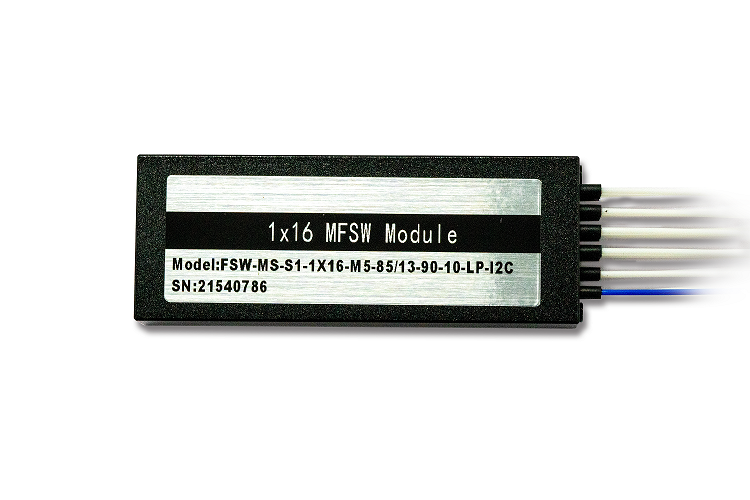Different Types of Polarization Maintaining (PM) Optical Switch Technologies
2024-09-07
Polarization Maintaining (PM) optical switches are essential components in a variety of optical systems, ensuring the polarization state of light remains constant as it passes through. This consistent polarization is crucial for applications requiring precise control and manipulation of polarized light, such as fiber optic sensing, coherent communications, and advanced research. PM optical switches help minimize polarization-dependent loss (PDL) and polarization mode dispersion (PMD), thereby enabling accurate data transmission, high signal-to-noise ratios, and enhanced overall system performance.
PM optical switches can be broadly classified based on their operating mechanisms:
1. Mechanical Optical Switches
Mechanical optical switches work by physically changing the path of light using mechanical components such as prisms, mirrors, or movable optical fibers. In the context of PM switches, these mechanical systems are carefully designed to ensure that the polarization of the light remains constant as the switch operates. These switches offer high reliability and low insertion loss, which makes them effective for handling high-power optical signals. However, they tend to have slower switching speeds, often in the millisecond range, due to the physical movement required for operation. Their mechanical parts are also subject to wear over time, which may reduce their long-term durability. Despite these limitations, mechanical PM switches are ideal for applications like optical testing, monitoring, and network reconfiguration, where slower switching speeds are acceptable.
2. MEMS Optical Switches
MEMS technology utilizes microscopic mirrors or movable components to switch optical paths, allowing for more compact designs and faster switching compared to traditional mechanical switches. However, most MEMS optical switches are non-polarization maintaining, as controlling polarization at the micro-scale can be technically challenging. MEMS switches are favored for their high integration, small form factor, and relatively fast switching speeds. However, in applications requiring strict polarization control, they are less commonly used than other types of PM switches. MEMS technology excels in data centers, optical cross-connects, and network reconfigurations, where space and speed are prioritized over polarization sensitivity.

3. Electro-Optic Switches
Electro-optic switches rely on the electro-optic effect, where an electric field changes the refractive index of materials like lithium niobate (LiNbO₃) or indium phosphide (InP), thereby altering the path of the light while preserving its polarization. These switches are renowned for their fast switching speeds, often in the nanosecond to picosecond range, making them ideal for high-speed optical communication systems. Additionally, electro-optic PM switches provide precise control over light, which is critical in sensitive optical networks. However, these devices typically exhibit higher insertion loss compared to mechanical switches and consume more power due to the continuous need for an electric field. Electro-optic switches are primarily used in high-speed data transmission and optical signal processing, where rapid switching and accuracy are essential.
4. Acousto-Optic Switches
Acousto-optic switches use sound waves to modulate the refractive index of a medium, causing the light to be redirected while maintaining its polarization. Materials such as tellurium dioxide (TeO₂) or quartz are commonly used in acousto-optic PM switches. This type of switch offers moderate switching speeds, typically in the microsecond range, and can handle multiple wavelengths, making them suitable for wavelength-selective switching applications. However, they tend to be bulkier and exhibit moderate insertion loss compared to electro-optic switches. Acousto-optic switches are commonly used in wavelength division multiplexing (WDM) systems and optical signal routing, where multiple wavelengths must be managed simultaneously.
5. Magneto-Optic Switches
Magneto-optic switches utilize the Faraday effect, where the polarization of light is rotated in the presence of a magnetic field. The materials commonly used in these switches include garnets and other magneto-optic crystals. Magneto-optic switches offer reliable, non-mechanical switching, making them well-suited for environments where mechanical systems might fail. However, these switches typically have slower switching times, often in the millisecond range, and their complex design can make them more expensive than other switch types. They are often used in specialized optical signal routing applications, particularly in environments that demand high reliability.
6. Liquid Crystal Optical Switches
Liquid crystal optical switches manipulate the polarization state of light using liquid crystals, whose orientation can be controlled by applying an electric field. These switches are highly efficient at controlling polarization and require low power to operate, making them suitable for applications where power efficiency is essential. However, liquid crystal switches are typically slower, with switching speeds ranging from milliseconds to seconds, and their performance can be sensitive to temperature fluctuations. They are used in tunable optical filters, modulators, and optical communication systems that require precise polarization control.
As fiber-optic technology continues to evolve, the demand for reliable and efficient PM optical switches is increasing. The different types of PM optical switch technologies—whether mechanical, MEMS, electro-optic, acousto-optic, magneto-optic, or liquid crystal—each offer unique advantages and are suited to specific applications, from high-speed data transmission to network reconfiguration.
At GLSUN, we understand the critical role that polarization maintaining optical switches play in demanding optical systems. We offer a range of PM optical switch solutions tailored to meet the specific needs of various applications.









